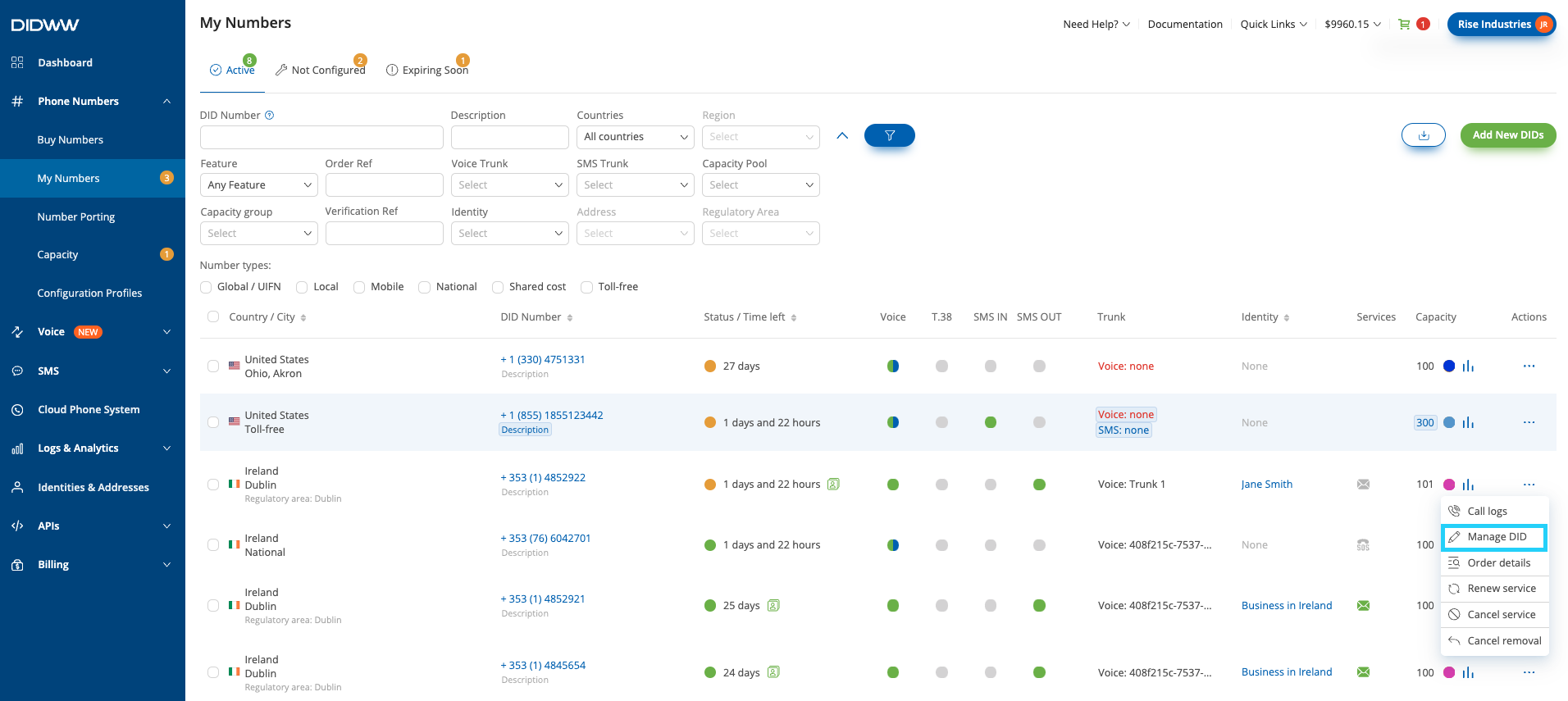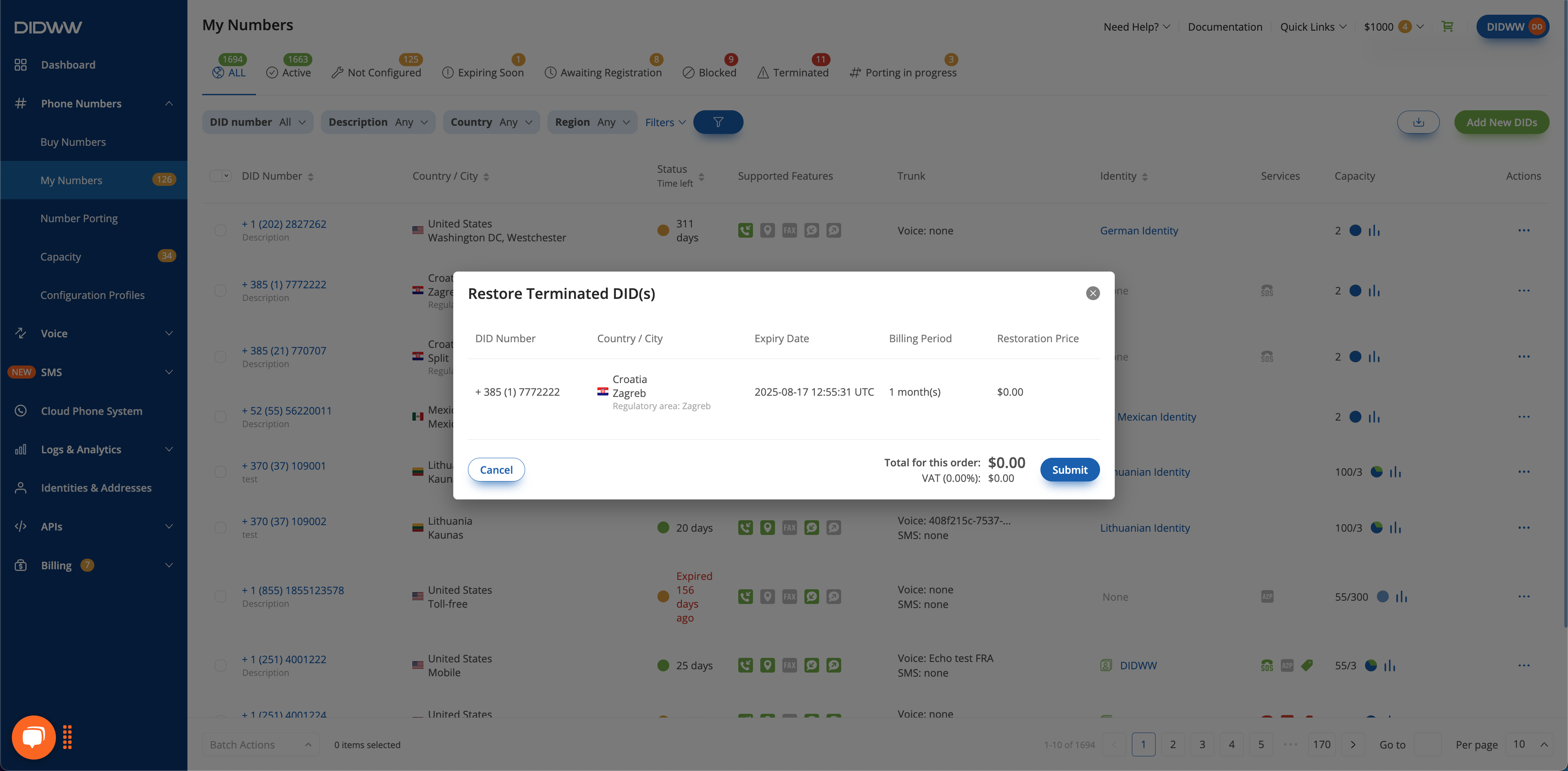Object: Phone Number
The Phone Number object is configured with a phone number on which incoming calls are to be received.

Fig. 1. Phone Number Object
The information to be entered for this object includes:
Name of the Phone Number object, used to identify the number on the workspace. For example, “Toll-Free London.”
Newly created Phone Number objects are provided with default names in the format {Tab name} {Object type} {Object type count in current tab}, for example “Main Phone Number 3”.
The phone number, which may be selected from a list of unused phone numbers that were previously added via the Phone Numbers tab in the Numbers menu.
Phone numbers are entered in E.164 format: <CountryCode> <City/AreaCode> <LocalNumber>. The country code is 1-3 digits long, while the length of the city/area code and local number may vary. For example:
14169233346 for Toronto, Canada
442034116446 for London, United Kingdom.
A phone number may only be allocated to a single Phone Number object, and may not be reused by other such objects.
Note
Phone numbers can be added or deleted in the Numbers menu under the Phone Numbers tab. This section allows you to manage the list of available phone numbers, which can then be assigned to specific Phone Number objects.

Fig. 2. Phone Number Object Creation
CLI Rules
CLI Rules are used to override the Source Caller Name. This functionality allows flexible Caller Name configurations and may be used to differentiate SIP calls received from phone.systems™. CLI Rules will help you to identify from which Phone Number object the call is coming from.
Some CLI Rule examples:
1. Changing Caller Name to Custom text:
SRC Name Rewrite Rule:
^(.*)$SRC Name Rewrite Result:
Custom text
2. Add Custom text before the original Caller Name:
SRC Name Rewrite Rule:
^(.*)$SRC Name Rewrite Result:
Custom text \1

Fig. 3. CLI Rules